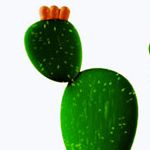Tracker or Mocha?
Copy link to clipboard
Copied
Maybe missing something obvious, but struggling to understand the difference between these two.
I used Tracker for motion and 3d. but seems Mocha is very similar. Is one easier to use and edit than
the other etc? I am yet to start using Mocha as been happy with my Tracker results so far.
Copy link to clipboard
Copied
Mocha uses a different tracking solution called Planar Tracking. This is a very effective method has instead of looking at individual track points, planar tracking looks at dozens and uses that to calculate then interpolate a plane. It's great for adding signs to trucks, buildings, computer screens etc as it can also cope with the plane pivoting.
AE's trackers has improved massively in recent years though, so there's no right and wrong answer. If you are getting effective tracks, keep with what you know, although learning a new tool is always worth it.
Copy link to clipboard
Copied
Thankyou so much, that makes alot more sense now.
Im currently creating a project that has a camera moving past a billboard which is changing perspective as it gets closer.
May try Mocha and see what results i actually get. Wish me luck,,!
Copy link to clipboard
Copied
Mocha will track shots that are nearly impossible to track using Motion Tracking.
Sometimes you can effectively simulate 3D object tracking using Mocha and AE's Camera Tracker. If the surface, like someone's hand, is properly shot, you can track the hand, add the movement to a solid with Grid applied, then Camera Track the moving grid and end up with a solution that lets you add a 3D model to the actor's hand.
Mocha AE is also used for manual rotoscoping. It can be a lot faster than just keyframing a mask.
A workflow I call Stabilized Power Pin is handy if you need to add a graphic or replace a surface on a flat plane. I even used the workflow to remove a tattoo from an actor's neck for a feature film. Stabilizing a small area on the Actors neck and enlarging it saved me many weeks of work. Without Mocha AE, I would have had to paint over or clone a frame at a time. Here's a tutorial I created to demonstrate the technique:
Mocha Essentials is a website that will give you an excellent understanding of the many different ways you can use Mocha to improve your workflow when you need to add just about anything to a scene. You will get more out of the Mocha Essentials tutorials than you can by searching the internet for Mocha Tutorials. You must be very careful about the tutorials you watch. Many of them are presented by well-meaning enthusiasts, and the explanations can be incomplete, and the workflows are often very inefficient.
I hope this helps.
Copy link to clipboard
Copied
Thankyou, finally managed to use Mocha successfully to track. One thing i found really usesful and learned from Mocha Essentials too, is to still track an object when it leaves the screen. That is one thing iv really struggled with before using Tracker only. That webiste has excellent easy to follow tutorials.
Copy link to clipboard
Copied
Mocha is a constraint-based tracker by ways of its planar tracker, which adds a layer of extra math that tests plausibility of the results, preventing it from producing illogical tracks. That and of course it simply has much finer control over the tracker regions, excluding objects from the track and a few other things. None of this exists in AE's old 2D tracker. The camera tracker still has soem of these limitations, too.
Mylenium
Copy link to clipboard
Copied
Mocha is your best option.
Byron.
Find more inspiration, events, and resources on the new Adobe Community
Explore Now


